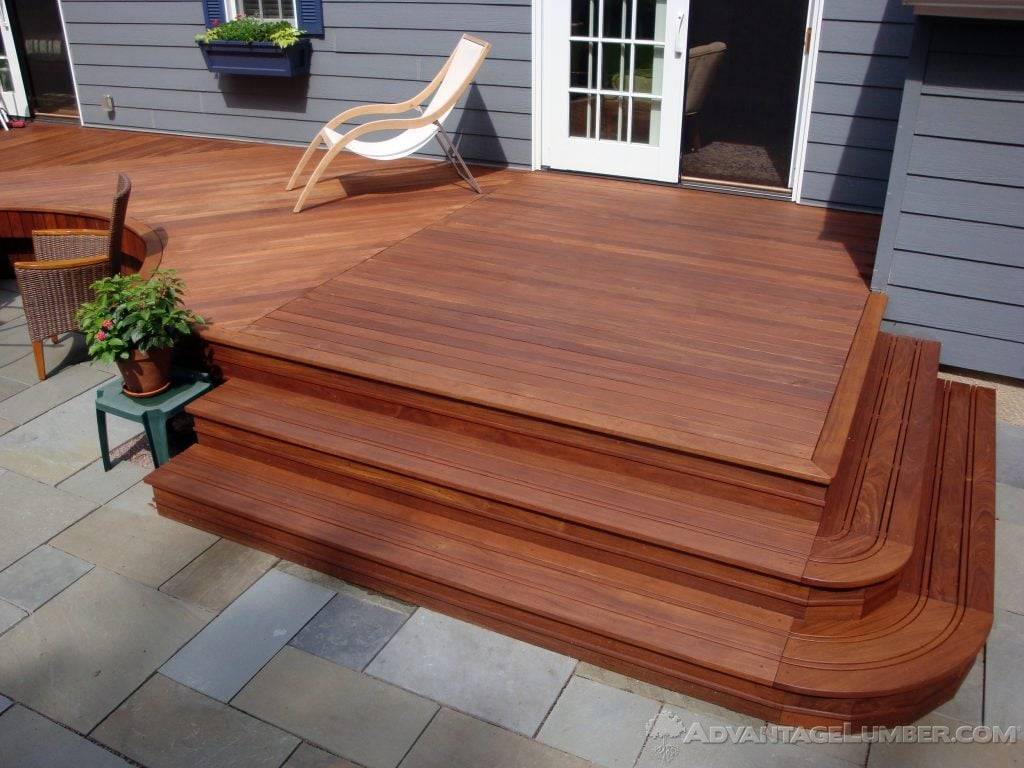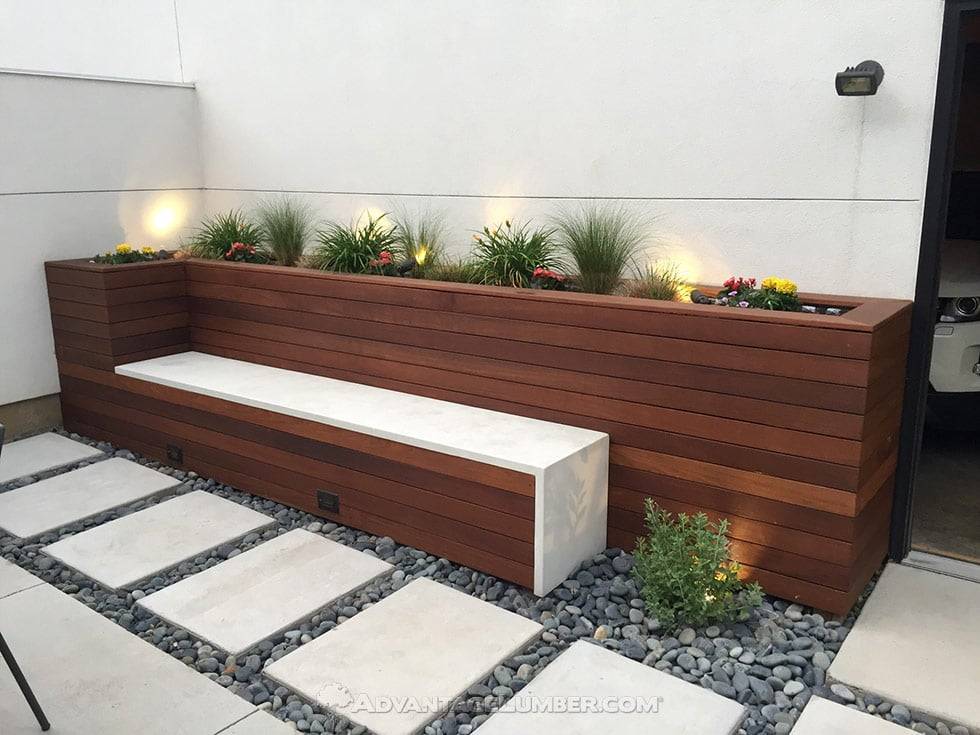Building a deck in a climate that sees extreme weather such as extreme heat, extreme cold, hurricanes, lots of rain, ice and snow requires some extra planning to ensure your deck will last and resist unwanted movement such as warping, cupping, bowing and twisting.
Dry Climates
In dry climates like Arizona, wood decking materials will shrink due to the lack of moisture. All building materials will expand and contract with temperature and humidity changes. Composite decking materials generally expand in the warm temperatures and shrink in the cooler temperatures.
Wet and Humid Climates
Climates like Florida that see extreme heat, rain, humidity and hurricanes are some of the harshest environments on homes and the materials they are built with. Constant rain and humidity will cause wood decking to expand, composite materials will also tend to swell in these climates.
These climates also tend to promote the growth of mold and fungi, especially in the areas that do not see full sun all day. This can also lead to faster degrading, rot and decay of building materials.
Extreme Sun and UV Rays
Many areas such as Florida, Arizona, California and more see extreme sun and UV rays. The UV rays from the sun are one of the harshest elements that attack many materials and building materials like decking are no exception.
The UV rays will fade most materials including wood which will eventually turn gray and composites can significantly fade from their existing color that you loved originally.
Extreme Cold, Ice and Snow
If your area gets very cold and see lots of ice and snow in the winter and then hot and humid temperatures in the summer. Your deck is going to see the widest ranges of extreme conditions which means the most expansion and contraction.
Material Selection
All of these different climates can be harsh on building materials especially horizontal surfaces like decking. There are materials that have proven to stand up to these harsh climates better than others.
South American hardwood decking such as Ipe, Cumaru, Tigerwood, Garapa and Massaranduba have proven to last up to 75 years in some applications.
These hardwood decking species have shown to work in every climate from the dry dessert to hot and humid Florida all the way to cold and snow covered Buffalo, NY.
Sizes
The most common decking size is 5/4 x 6” which will have a finished dimension of 1 inch thick and 5.5 inches wide.
However just like hardwood flooring the wider your deck boards are the more likely they will be to cup.
Use Narrower and Thicker Boards
Narrower boards are less likely to cup.
Using narrow boards such as 1×4 (finished at 3 1/2″ wide), is not only more stable but it can save you money and give a more interesting look.
Thicker boards such as 5/4 x 4 (finishes at 1” thick and 3 1/2″ wide) are also more stable then 1 x 4 (finishes at 3/4” thick and 3 1/2″ wide) it’s a quarter inch thicker and gives you more stability.
Sawn Lumber Differences
Quarter Sawn Decking:
Quarter sawn decking comes at a premium due to the labor it takes to mill each plank. To mill quarter sawn wood, each log is sawed at a radial angle into four quarters. Then each quarter is plain sawn. This method of quarter sawing does leave some waste, but much less than rift sawn lumber.
This method of sawing produces a plank where the tree’s growth rings are near, or totally perpendicular to the plank’s surface. Quarter sawn decking offers even more stability and the following benefits:
- Decreased expansion and contraction on the plank’s width
- Twisting, cupping, and warping resistance
- Ages evenly over time
- Chances of surface checking are significantly reduced
- More resistant to moisture penetration
- More character beauty with ray flecks
Are Your Project Conditions Less Than Ideal?
We recommend a minimum of 18 inches of unrestricted air flow underneath your deck. Unrestricted means plenty of air can flow underneath your deck so it’s not completely sealed off with skirting.
Closing off the underside of your deck will not allow enough air flow under your deck.
This creates different moisture levels on the underside of your deck boards as the top surface gets air flow and heated by the sun.
Creating two different climates for your deck boards causes the top of the deck surface to expand and contract at different rates.
This makes the deck boards cup which is undesirable for many reasons.
Some homeowners have projects like boat docks and ground level decks that can not meet the ideal conditions but still want a beautiful hardwood deck.
In these cases, even though we don’t recommend it unless you can create the ideal conditions we suggest using 5/4 x 4 decking or 5/4 x 4 quarter sawn decking.
You should also take as many precautions as you can to mitigate any moisture issues or differences underneath your decking.
Oiling the underside of your deck boards before installing them can also help reduce moisture absorbing into your deck boards.
Projects that used our 4 inch wide decking for their projects








Do you have 2×2 lumber? Suitable for countertop.
We chose Tigerwood several years ago. It is obvious the contractor had no idea what he was doing. The hidden fasteners show, spacing is anywhere from none to almost an inch. Boards have cupped; some are falling off. Many/most have warped. We have used IPE oil every two years. Local contractors tell me I chose the wrong wood; no one is willing to repair but just want to pull down. I spent double what I would have for another type of deck and have hated it from day one. Is this the use of this wood in Kansas and I should not have chosen, or is the poor workmanship the cause. Any recommendations at this point? Thank you.
The article “Best Decking for Extreme Climates and Projects” talks about UV rays fading and silvering the deck boards yet all the pictures depict perfectly dark and original board colors. My issue or question is why isn’t there any tips, tricks or advice in the article on maintaining that beautiful color or is an eventual silver deck all that can be hoped for? Please advise.
Those dark brown decks have been treated with Ipe Oil, which protects the color from UV fading. We typically advise applying a coat of oil every year or two to preserve the color, but the most extreme climates might need it more often.
If the tigerwood was installed with 1″ or zero gap spacing, then your contractor definitely did it wrong. Your Kansas climate by itself would not cause the issues you mention, but other factors about the installation site and project design could contribute. I can’t offer a specific explanation without knowing the specifics of your deck, but here are some general statements:
Ventilation is key. This is part of why proper gap spacing is necessary. Wet wood that dries unevenly will warp. Gap spacing, adequate ground clearance, and good air flow around and underneath the boards all help with this. We also advise against installing over concrete.
You can browse all our lumber products here: https://www.advantagelumber.com/hardwood.htm
I’m in Ottawa Canada, my deck is also in Tigerwood ( 12×26). Our weather is extreme, from mid 30´s Celsius to – 30’s . Our yard is south facing with full sun, it’s 6:30 pm and 36C !!! I apply IPE Oil every year in June and it is bleached by September and white by April. Only a few boards have cupped (within the 1st year), about 15% have surface cracks but overall it’s still incredibly smooth and has weathered very well . It is rock solid, none of the planks have loosen, broken, or warped. I built the deck in 2014/15. The author isn’t kidding about expansion, our summers are humid and winters dry, in order to save money, I decided to clad my pergola and gazebo posts. I used a gallon of West system epoxy and screws and some of the seams still split due to expansion. Btw it is the glue that broke, the wood did not break. Save yourself a lot of grief, blood and time and use 2×6 to build your posts. I followed the general guidelines on their website and the only thing I can reproach them is how often you have to apply the IPE oil to maintain the colour. If you’re in a sunny local, minimum once a year, twice if you want the colour year round.